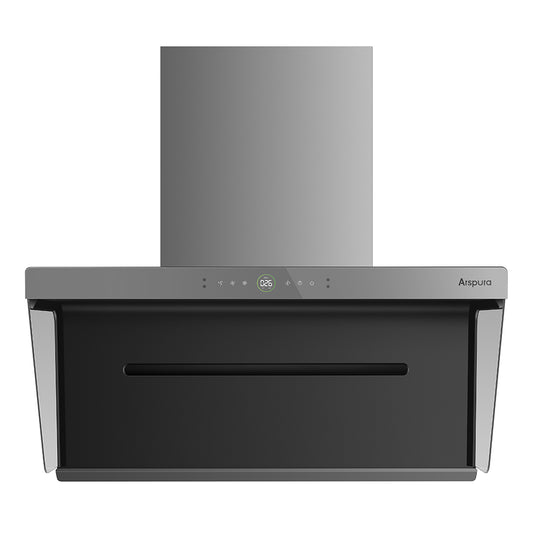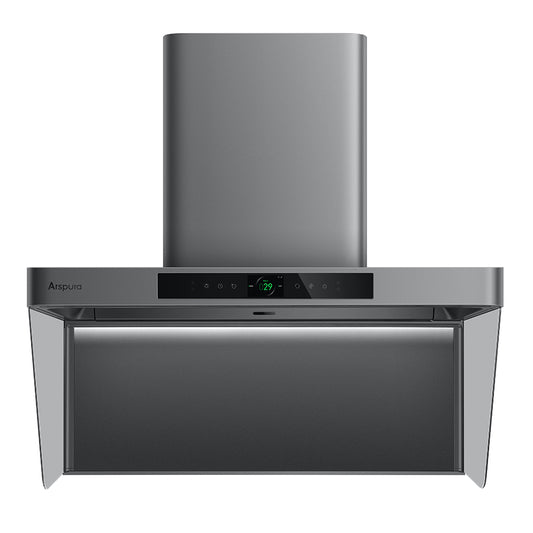Is Your Kitchen Secretly Harming Your Lungs?
The aroma of foods being cooked gives a sense of warmth deep inside. However, actual cooking gives a release to invisible hazards in the air within our kitchens. While we are concerned about environmental pollution, the air we have within our kitchens can be very unsafe. It may actually pose a threat to your health.
This guide will expose the secret threats that are embedded in fumes due to cooking, how they can imperil your lungs, and how best to shield your loved ones utilizing proper ventilation.
The Invisible Threat: What's Really in Your Kitchen Air?
You flip on your stove, and a chemical reaction commences. This holds particularly true for a gas stove. Good aromas are combined with bad airborne substances. These substances remain airborne well after you've finished having dinner. To make the air pure, first you have to know what you inh

Particulate Matter (PM2.5)
When you cook food at high heat, tiny bits of fat and oil are released into the air. These minute particles are known as PM2.5. So small are they that they can penetrate deep into your lungs, and they may even enter your bloodstream. Surprisingly, even the act of making toast can produce a significant amount of these harmful particles.
Volatile Organic Compounds (VOCs)
VOCs are gases that are created when you cook. They also occur as a result of burning natural gas. Certain chemicals, including benzene and formaldehyde, may be formed while doing this. It happens when oil gets extremely hot and commences to smoke. Their presence may cause the air to become musty and irritate your lungs.
Combustion Byproducts (NO₂ and CO)
You have a gas range, so you are burning a fossil fuel in your own home. It generates nitrogen dioxide (NO₂) and carbon monoxide (CO). Nitrogen dioxide is a powerful irritant and can aggravate asthma and other breathing issues. While carbon monoxide is a deadly toxin and a hazard, too, in low concentrations, but in the long run.
From Kitchen to Lungs: The Health Consequences
The bad things in the kitchen air do not just go away. You breathe them in. If you breathe them for a long time, you can get health problems. These can be small problems or serious long-term sicknesses.
Short-Term Effects
In the short term, cooking fumes can cause problems right away. You might think you have allergies or a cold. These problems can be:
- Watery eyes and a runny nose
- Coughing and sneezing
- Headaches and feeling dizzy
- Trouble breathing, especially if you have asthma
Long-Term Health Risks
The real danger is breathing these fumes for a long time. Studies show a link between bad indoor air from cooking and serious health problems. The fine particulate matter (PM2.5) is a big worry because it can cause or worsen problems like asthma, COPD, and heart disease. Some of the chemicals are also known to cause cancer. So breathing them for a long time is a big risk.
Your First Line of Defense: The Power of a Quality Range Hood
You don't have to abstain from cooking to be protected. Kitchen air pollution's best ally is a good range hood. Its function is simple but very essential. It collects the smoke, the steam, and the nasty particles in the air. Then it expels them out of your home before they have a chance to circulate. Good ventilation isn't a benefit to a kitchen. It is a very essential feature of a healthy home.

How to Choose the Right Range Hood for Your Kitchen
Not all range hoods are the same. Choosing the right one is about more than just matching colors. You need to think about these things to get a device that really cleans your air.
Ducted vs. Ductless: The Big Difference
This is the most important choice you will make.
- Ducted Range Hoods: These are the best choice. They catch the bad air and send it right outside your home through a duct. This completely removes the bad things from your home.
- Ductless (Recirculating) Range Hoods: These hoods pull air through filters. Then they release the air back into the kitchen. They are better than nothing, but they do not remove the smallest particles, VOCs, or gases very well.
If you're trying to decide between these two options, our detailed comparison can help you make the right choice for your specific kitchen setup and needs.
Airflow Power (CFM)
While many brands focus on CFM (air volume), a range hood's airflow speed is more critical. High speed creates the strong suction needed to capture smoke and grease at the source before they escape. A high CFM rating doesn't guarantee performance; a design that maximizes speed and capture efficiency is what truly keeps your kitchen air clean.
Size and Capture Area
For the best results, your range hood should be as wide as your cooktop. It is even better if it is a little wider on both sides. A deeper hood is also better. This makes sure more smoke and fumes are pulled into the vent and do not escape into your kitchen.

Beyond the Hood: Simple Habits for Cleaner Kitchen Air
A range hood is your main tool, but you can do other things to make your kitchen air even cleaner.
- Open a Window: If you can, open a window while you cook. This helps move the bad air out.
- Use the Back Burners: Your range hood’s fan usually works best over the back burners. So you should use them for high-heat cooking.
- Clean Your Filters: A dirty filter makes your range hood work poorly. You should wash metal filters every month. And you should replace charcoal filters in ductless models when the instructions say to.
Take a Breath of Fresh Air
Your kitchen should be a good place, not a source of air pollution. You can understand the risks from cooking fumes. And you can take steps to fix them to protect your lungs. Installing and using a good, ducted range hood is the most important step. It is a simple change that helps your family's health. And it lets you breathe easy in your home.
Frequently Asked Questions About Range Hoods
Q1: When should I turn on my range hood?
A: You should turn it on a few minutes before you start cooking. This helps the air start moving. You should leave it on for 5-10 minutes after you finish cooking to clear all the fumes.
Q2: Are ductless range hoods worth it?
A: A ductless hood is much better than no ventilation at all. It will help with smells and some grease. But it cannot remove the most harmful small particles and gases.
Q3: How loud should a range hood be?
A: Noise is measured in "sones." A lower number means the fan is quieter. You will not want to use a loud hood. So you should look for one that is quiet on its normal settings.




